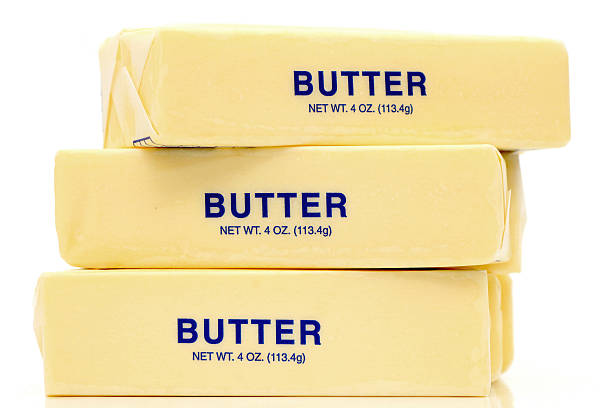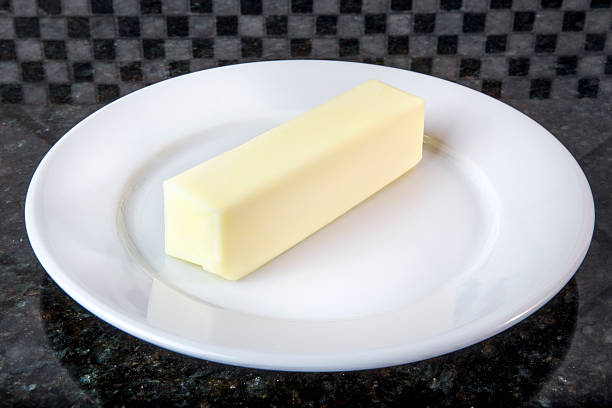Butter is a dairy product made from the fat and protein components of milk or cream. It is a solid, yellowish-white substance that is commonly used as a spread, condiment, or ingredient in cooking and baking. Butter is rich in flavor and has a smooth, creamy texture, making it a popular choice in many dishes.
One of the main concerns when it comes to butter is its calorie content. Many people are interested in knowing how many calories are in a stick of butter and whether or not it is a healthy choice. In this article, we will explore the calorie content of butter, its nutritional value, and how it fits into a balanced diet.
How Many Calories are in a Stick of Butter?
A stick of butter is a common unit of measurement in the United States, equal to 1/4 cup or 4 tablespoons. One stick of butter contains approximately 810 calories. This is a significant amount of calories, especially when compared to other spreads and condiments. For example, a tablespoon of peanut butter contains about 95 calories, while a tablespoon of mayonnaise contains about 94 calories.
Butter is also high in fat, with each stick containing about 90 grams of total fat. Of this fat, about 60 grams are saturated fat, which has been linked to an increased risk of heart disease. The American Heart Association recommends that adults consume no more than 13 grams of saturated fat per day, so one stick of butter contains over four times this amount.
Is Butter Nutritious?
While butter is high in calories and saturated fat, it does contain some nutrients that can be beneficial for the body. One stick of butter contains about 7 grams of protein, which is important for building and repairing tissues. Butter also contains trace amounts of vitamins and minerals, including vitamin A, vitamin E, and vitamin K.
However, it is important to note that the majority of the nutrients in butter come from the milk or cream that it is made from. Skim milk or low-fat cream will provide more nutrients per calorie than whole milk or heavy cream, which are used to make butter.
How to Incorporate Butter into a Balanced Diet
Given its high calorie and fat content, it is important to consume butter in moderation as part of a balanced diet. Here are a few tips for incorporating butter into your diet in a healthy way:
Use butter as a condiment rather than a spread. Instead of spreading a thick layer of butter on your toast or bagel, try using it as a topping for vegetables, potatoes, or grilled meats. This will allow you to enjoy the flavor of butter without consuming too much.
Choose unsalted butter. Salted butter contains added sodium, which can contribute to high blood pressure and other health problems. Unsalted butter has a more delicate flavor, allowing you to control the amount of salt in your dishes.
Experiment with other spreads and condiments. There are many alternatives to butter that can add flavor and nutrition to your meals. These include olive oil, avocado, hummus, and nut butters.
Limit your intake of high-fat and high-calorie foods. In addition to butter, be mindful of other sources of saturated fat and calories in your diet, such as fried foods, fast food, and processed snacks. These foods should be consumed in moderation as part of a balanced diet.
It is important to note that the caloric content of butter can vary slightly depending on the specific brand and type of butter. Some brands may contain slightly more or less fat, which can affect the caloric content.
While butter is a source of essential nutrients, it is also high in saturated fat and should be consumed in moderation as part of a healthy diet. The American Heart Association recommends limiting saturated fat intake to less than 7% of daily caloric intake. For a person following a 2,000 calorie per day diet, this translates to less than 16 grams of saturated fat per day. One stick of butter contains more than 20 grams of saturated fat, so it is important to consider portion sizes and consume butter in moderation.
Butter can be a flavorful and versatile ingredient in cooking and baking, but it is important to understand its nutritional value and how it fits into a healthy diet. One stick of butter contains 828 calories, the majority of which come from fat. While butter is a source of essential nutrients, it is also high in saturated fat and should be consumed in moderation as part of a healthy diet.
In conclusion, a stick of butter contains a significant amount of calories and fat. It’s important to use it in moderation and balance it out with other nutrient-rich foods. When choosing a type of butter, consider your dietary needs and preferences. Remember, all foods can be part of a healthy diet when consumed in moderation.

 Home
Home Health
Health Diet & Nutrition
Diet & Nutrition Living Well
Living Well More
More













